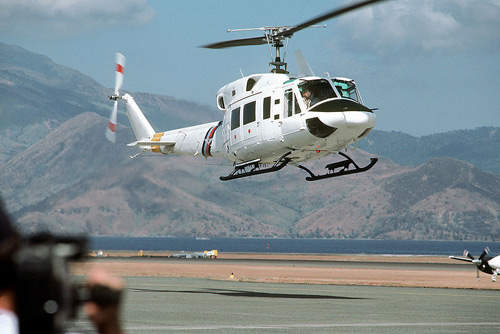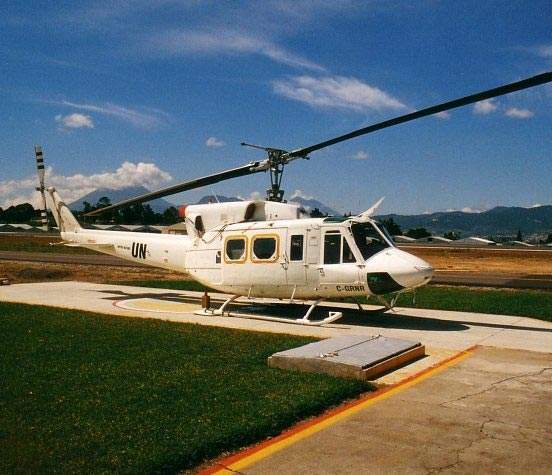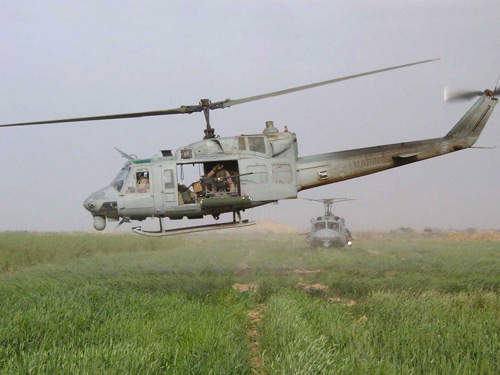The Bell 212 HP AH Mk is a military utility helicopter operated by the UK’s Army Air Corps (AAC). It is a variant of the Bell UH-1 family of military helicopters. Bell 212 helicopters are currently deployed in the forests of Belize and Brunei by the AAC. The Bell 212 is built by Bell Helicopter Textron (BHT) in Fort Worth, Texas.
The helicopters were procured by AAC under a civil owned military-registered contract. The fleet was operated by 7 Flt AAC for the British Military Garrison Brunei (BGB), 25 Flt AAC for the British Army Training Support Unit Belize (BATSUB) and Joint Helicopter Command (JHC), Middle Wallop for aircrew training.
The Bell 212 was originally developed for Canada. The helicopter took off for its maiden flight in 1968. It was primarily marketed as a transport helicopter for civilian operators and a military variant was introduced.
The helicopters are in service with civil and military operators from various countries including Brazil, US, UK, Canada, Colombia, United Arab Emirates, Germany, Greece, Italy, Japan, Mexico, Spain and Turkey. The Bell 212 can be configured for a range of operations including casualty evacuation, troop transportation or passenger carriage, cargo carriage, training and rescue missions.
They can carry substantial loads in hot and humid weather. A twin-engine configuration enhances safety, a factor that means the model is popular with commercial operators in offshore oil and gas operations.
Bell 212 helicopter design
The design is based on the Bell 205 and Huey UH-1 versions. It was developed by adding an extra engine to the single-engine Huey variant. The original teetering rotor system of the Huey was used for the new design.
The new helicopter has a winch on the side that can be used for medical evacuations in difficult terrain. An underslung bucket is also available for extinguishing fires. Auxiliary power is provided by two independent 30V generators. The first prototype Bell 212 had an instrument flight rules (IFR) instrument kit with a large fin on the roof to change the aircraft’s turning operation while performing complex instrument flight manoeuvres.
Bell 212 has an overall length of 15.5m, a width of 14.6m and a height of 3.9m. The rotor disk diameter is 14.6m. The empty weight of the aircraft is 2,961kg and the maximum take-off weight is 5,080kg.
Bell 212 cockpit
The cockpit was designed for single-pilot operations. The Bell 212 can be configured to accommodate up to 14 passengers. The seating arrangements for 13 passengers are provided in cabin and one passenger can be accommodated in the cockpit’s left-hand side seat.
The cockpit is equipped with Max-Viz EVS-1500 enhanced vision system (EVS). The external system integrates modern sensor image processing as well as active dynamic range management. The system incorporates narrow-angle field of view (FoV) for better resolution to detect obstacles and hazards. A wide-angle view aspect is also provided by adding a second FoV to enhance manoeuvring capability and situational awareness.
The EVS system provides flight crews with original images of terrain, runways, aircraft and other objects. It uses real-time infrared sensors, signal processing and cockpit displays to improve visibility.
Avionics
The instrument flight rules (IFR) avionics system includes twin allied signal KTR 908 720-channel, very-high-frequency transceivers, twin KNR 660A VOR / LOC / RMI receivers, a KDF 800 automatic direction finder, KMD 700A distance measuring equipment, a KXP 750A transponder and a KGM 690 glide slope / marker beacon receiver. It also includes dual Honeywell Tarsyn 444 three-axis gyro units, a stability augmentation system, an automatic flight control system and a selective flight director.
Engine
A Pratt and Whitney Canada PT6T-3 Twin-Pac powers the main rotor. It consists of a combination of two PT6 power turbines driving a common gearbox. These engines can produce 1,342kW.
Each engine can deliver 671kW for 30mins, or 571kW continuously during the failure of the other engine to enable the 212 to manage cruise speed at maximum payload. In the event of the failure of one turbine, the other operational turbine can deliver its full 671kW output.
The helicopter can be fitted with two 76 or 341l optional auxiliary fuel tanks. The extra tanks bring the maximum capacity to 1,499l. A single refuelling point is available on the starboard side of the cabin.
Landing gear
The Bell 212 is equipped with tubular skid-type landing gear. The high skid landing gear features lock-on ground handling wheels and fixed floats. It can also be fitted with optional emergency pop-out floats.
Performance
The Bell 212 can cruise at a maximum speed of 130kt. It can fly at a maximum service altitude of 17,400ft. The range of the aircraft is 250nm and its rate of climb is 1,745ft per minute. The internal cargo capacity is 220ft³. The aircraft can carry an external load of 2,268 kg.







